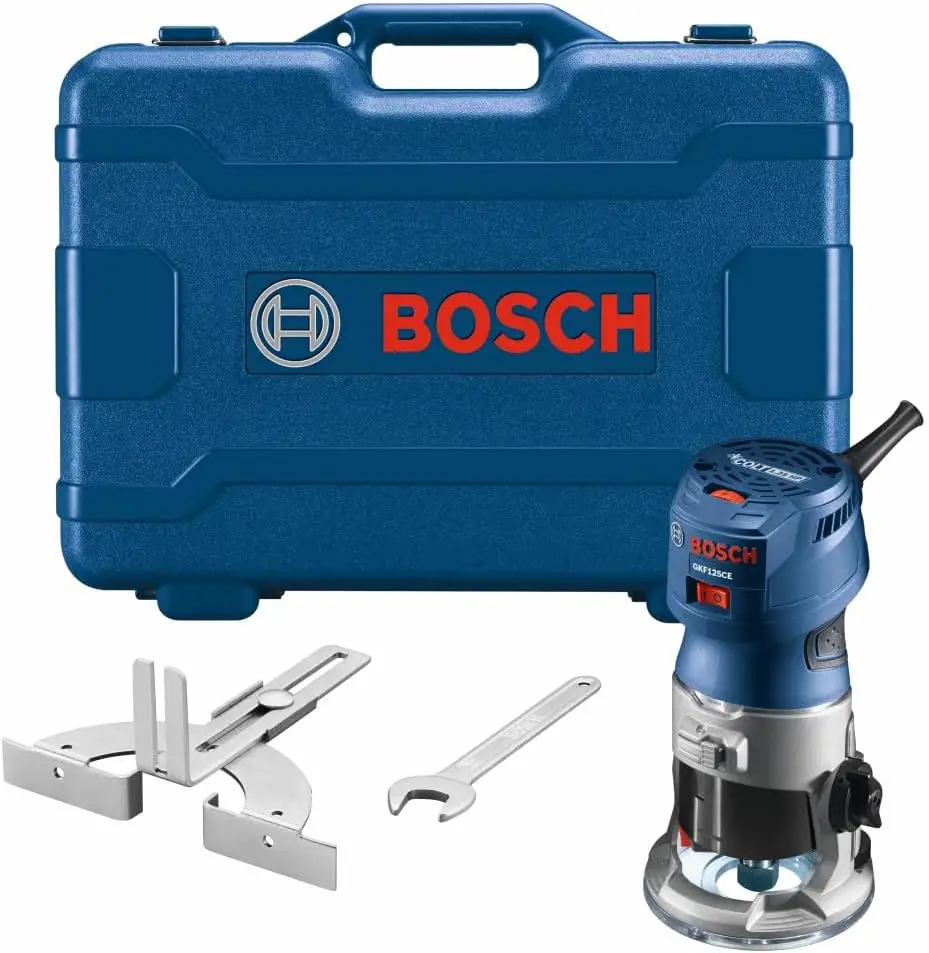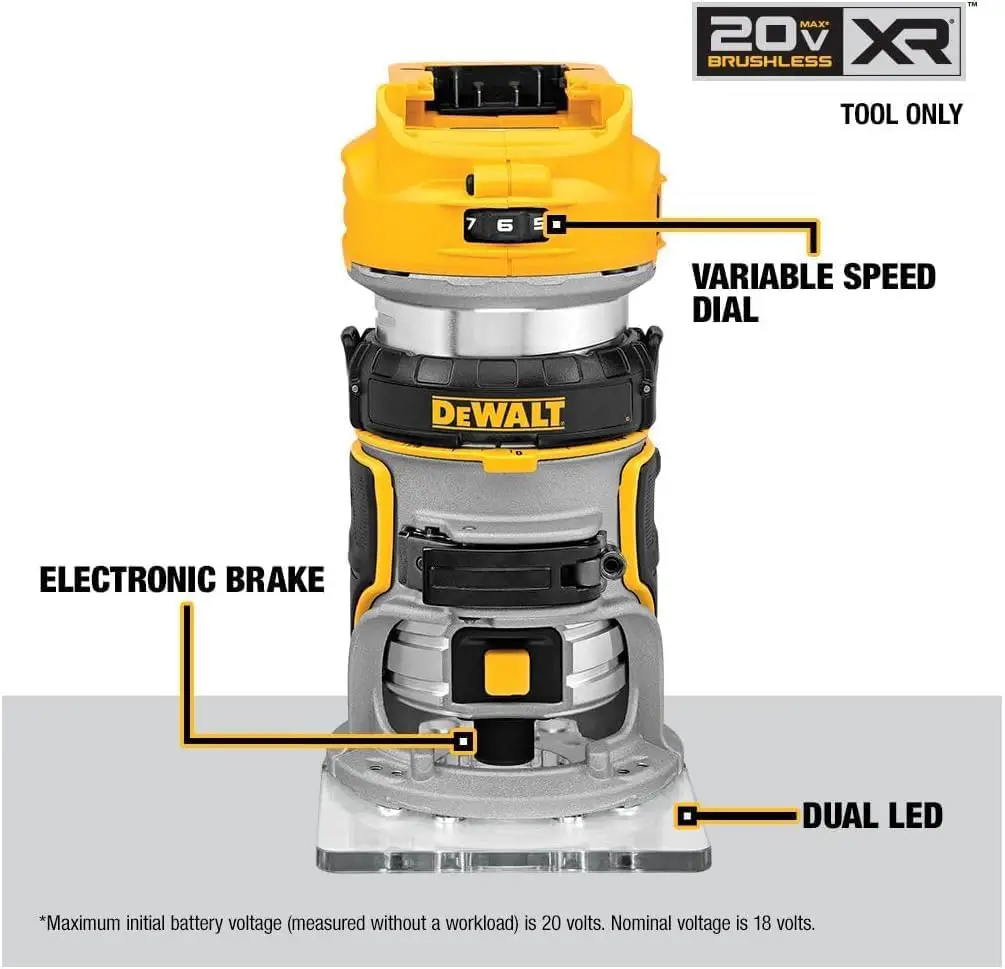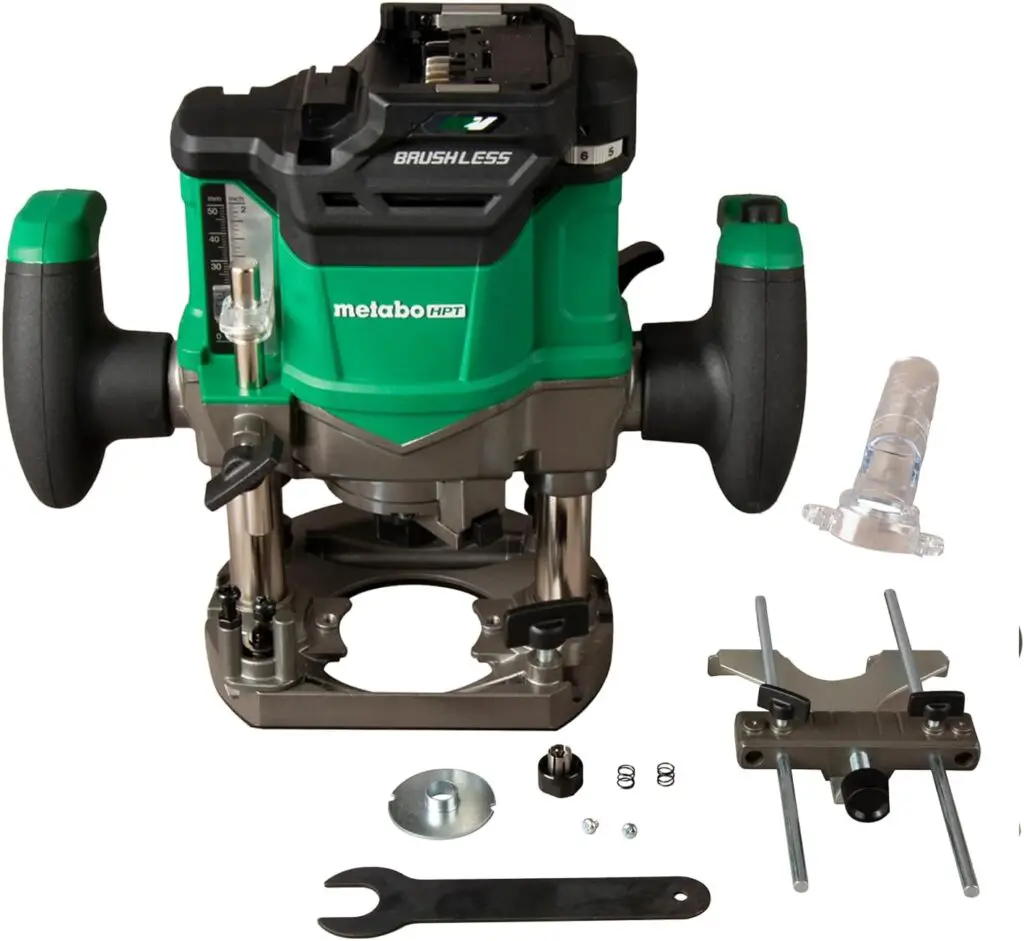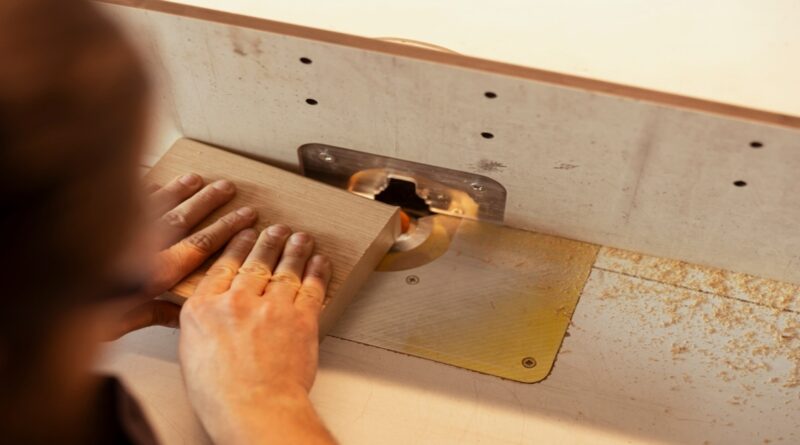Wood Shaper VS Router: Which Tool Do You Actually Need?
Wood shaper vs router decisions confuse even experienced shop owners trying to expand their tool collection. You’ve got projects waiting, money ready to spend, but choosing the wrong tool means wasted cash.
A router sits unused because it can’t handle your production work, or a shaper collects dust because you need portability instead. Every day without the right tool delays projects and costs you money through inefficiency. The right choice transforms your capabilities, whether you’re creating custom moldings or building furniture efficiently.
This comprehensive comparison reveals exactly which tool matches your projects, space, and budget requirements. Make an informed decision today and stop second-guessing your shop setup forever.
Quick Comparison: Wood Shaper VS Router at a Glance
| Feature | Wood Router | Wood Shaper |
| Type | Handheld or table-mounted | Stationary machine |
| Power | 1-3 HP typical | 3-5 HP typical |
| Cost | $100-$400 | $800-$3,000+ |
| Best For | Versatile projects | Production work |
| Learning Curve | Beginner-friendly | Intermediate to advanced |
| Space Required | Minimal, portable | Dedicated floor space |
| Safety | Lower risk | Higher risk, requires training |
What a Wood Router Actually Does?
A wood router tool spins a cutting bit at extremely high speeds typically 10,000 to 30,000 RPM. This high-speed rotation lets the bit cut cleanly through wood, creating edges, grooves, and decorative profiles.
The motor drives a collet that grips router bits with either 1/4″ or 1/2″ shanks. You control depth by adjusting the base height. The router moves across the wood (handheld) or wood moves past the bit (table-mounted).
Common Wood Router Uses:
- Creating decorative edge profiles on furniture and cabinets
- Cutting dados, grooves, and rabbets for joinery work
- Flush-trimming laminate and veneer edges precisely
- Template routing for identical parts production
- Sign making and intricate inlay patterns
Popular brands like wood router Milwaukee and wood router DeWalt offer reliable options. The Milwaukee 5625-20 delivers 3.5 HP for heavy work, while DeWalt’s DWP611 provides 1.25 HP for smaller projects.
I’ve used routers for everything from kitchen cabinets to custom picture frames. The versatility makes routers essential for furniture building and detailed projects, and understanding router advantages and disadvantages helps you use them effectively.
What a Wood Shaper Actually Does?
A wood shaper is a stationary machine with a vertical spindle protruding through a flat table. The spindle accepts larger cutters that shape wood edges as you feed material past the spinning cutter.
The motor drives a vertical spindle rotating at 7,000-10,000 RPM. Lower speeds than routers, but massively more torque from larger motors. Adjustable fences guide your workpiece, while spindle height sets cutting depth.
Common Wood Shaper Uses:
- Production runs of identical moldings and profiles
- Raised panel doors for kitchen cabinets consistently
- Complex architectural millwork requiring heavy cuts
- Stile and rail door frames with precision
- Large-scale furniture component production
The shaper excels when you need to run dozens or hundreds of identical pieces. Cabinet shops use shapers daily for door components. The stability and power handle hardwoods like oak and maple effortlessly.
The Critical Differences You Must Understand
- Power and Cutting Capacity
Routers typically max out around 3.5 HP in handheld models. That’s plenty for edge profiles and most routing tasks. But push a router through thick hardwood for extended periods, and you’ll bog down the motor.
Wood shapers start around 3 HP and commonly reach 5 HP or more. This extra power translates to cutting capabilities routers simply can’t match. I’ve watched shapers power through 2″ thick white oak making raised panels without slowing down.
- Size and Portability
Routers absolutely dominate here. A handheld router weighs maybe 10 pounds and fits in a case. You can take it to job sites, move it between workstations, or store it in a drawer.
Shapers are stationary machines weighing 200-400 pounds. They need dedicated floor space and aren’t moving once positioned. This commitment requires careful shop planning and permanent electrical installation.
- Cutter Options and Versatility
Router bits come in hundreds of profiles with 1/4″ or 1/2″ shanks. You’ll find bits for every conceivable edge treatment, plus specialty bits for dovetails and mortises. Changing bits takes maybe 30 seconds.
Shaper cutters use larger spindles (1/2″, 3/4″, 1″) and typically cost more than router bits. The selection, while good, doesn’t match router bit variety. However, shaper cutters handle much heavier cuts without deflection.
- Safety Considerations
Routers present lower risk overall. The smaller cutting diameter and lower mass mean less kinetic energy. The flat base rests on your workpiece, providing stability naturally.
Shapers demand respect and training. The exposed spinning cutter, higher mass, and power create serious injury potential. Kickback can happen violently if you lose control. Proper guards, fences, and technique become absolutely critical.
When a Wood Router Is Your Best Choice?
Choose a wood router tool when your work demands versatility over production volume.
Projects and Applications:
Routers excel at one-off custom pieces where you’re creating unique designs. Building a single entertainment center? Router. Making custom picture frames? Router. Edge profiles on a dining table? Definitely router.
The portability matters tremendously for on-site work. Kitchen installers use routers for scribing cabinets. Trim carpenters route door jambs in place. You simply can’t do this with a stationary shaper.
Budget and Space Constraints:
Starting out with limited funds? Quality routers cost $150-$300. A beginner-friendly model like the DeWalt DWP611 runs about $130 and handles 90% of routing tasks.
Small shop or garage workspace? Routers require minimal dedicated space. Table-mount them when needed, then store them away.
Still wondering if a router is essential for your shop? Consider your project types carefully.
When a Wood Shaper Is Your Best Choice?
Invest in a wood shaper when production efficiency and heavy-duty capabilities justify the cost.
Production and Repetition:
Cabinet shops running 50 raised panel doors need shapers. The setup time gets amortized across dozens of identical pieces. Once dialed in, you feed material through rapidly with perfect consistency.
Architectural millwork shops creating crown molding and custom trim rely on shapers. The power and stability produce clean cuts in dense hardwoods all day.
Complex Profiles and Heavy Cuts:
Some profiles simply exceed router capabilities. Large raised panels, heavy architectural moldings, and deep cope-and-stick joints need shaper power. The rigidity prevents chatter and tear-out that routers struggle with.
I watched a friend try routing raised panels with his 3 HP router. It worked, barely, but took multiple passes and burned edges. The same cut on a shaper? One smooth pass, perfect finish.
Professional Shop Efficiency:
If woodwork generates your income, a shaper pays for itself through time savings. What takes 5 minutes per piece on a router might take 1 minute on a shaper.
The ability to use power feeders automates production further. The consistency and speed justify the investment for serious professional furniture makers.
Cost Analysis: What You’ll Actually Spend?
Router Startup Costs:
- Quality handheld router: $200-$400
- Router table (optional): $200-$500
- Router bit collection: $100-$300
- Total: $400-$1,200
Shaper Startup Costs:
- Quality floor shaper: $2,000-$4,000
- Shaper cutter collection: $300-$800
- Safety equipment: $200-$500
- Total: $2,500-$5,000 minimum
For detailed router pricing by model and features, check our complete wood router cost guide.
Safety: What You Must Know
Router Safety Essentials
- Always use sharp bits, dull bits grab and burn wood dangerously
- Secure workpieces with clamps, never hand-hold small parts
- Route in the correct direction against bit rotation
- Wear eye and hearing protection always
- Keep both hands on the router when operating
Shaper Safety Essentials
- Install and use all guards religiously, exposed cutters are extremely dangerous
- Feed material against cutter rotation direction always
- Use push blocks and featherboards, never hand-feed small pieces
- Inspect cutters for damage before every use
- Consider power feeders for repetitive operations
- Get formal training before operating independently
The safety difference matters. Router mistakes might ruin a workpiece. Shaper mistakes can cause severe injuries.
Top Amazon Recommendations for Wood Routers
1. Bosch GKF125CEK Colt Palm Router Kit

The Bosch Colt delivers professional performance in a palm-sized package perfect for detailed work and edge routing.
Key Features:
- 1.25 HP (max) motor with 7.0-amp power
- Variable speed control: 16,000-35,000 RPM
- Ergonomic palm-grip design with soft-grip comfort
- Micro and macro depth adjustment system
- LED lighting for enhanced visibility
- Accepts bits up to 1-5/16″ wide
- Includes fixed base, edge guide, and hard case
Pros:
- Exceptional control for detailed work and precision cuts
- Variable speed prevents burning across different materials
- Comfortable for extended use without hand fatigue
- Soft-start reduces startup torque for better control
- Constant Response circuitry maintains speed under load
Cons:
- 1/4″ collet only (no 1/2″ option included)
- Less power than full-size routers for heavy cuts
- Corded design limits portability to job sites
Best For: Detail work, laminate trimming, hinge mortising, decorative edges, small to medium routing tasks
2. DeWalt DCW600B 20V MAX XR Cordless Compact Router

DeWalt’s cordless router delivers corded power with complete portability freedom for job site and workshop use.
Key Features:
- Brushless motor for extended runtime and durability
- Variable speed: 16,000-27,000 RPM
- Dual LED lights illuminate work surface
- Electronic brake stops motor quickly for safety
- 1/4″ collet capacity
- Compatible with optional DNP612 plunge base
- D-shaped base for stability during edge work
Pros:
- True cordless freedom without sacrificing power
- Brushless motor extends battery life significantly
- Dual LEDs provide excellent bit visibility
- Soft-start motor maintains speed during cuts
- Quick-release tabs for simple base changes
Cons:
- Battery and charger sold separately (bare tool)
- Heavier than some cordless competitors at 4.8 lbs
- Lower max RPM than corded models
Best For: Job site installations, cordless convenience, outdoor projects, trimming work where mobility matters
3. Metabo HPT M3612DA 36V MultiVolt Cordless Plunge Router

The world’s first cordless plunge router delivers full-size router power in a cordless package.
Key Features:
- 2 Peak HP brushless motor for maximum power
- Variable speed: 11,000-25,000 RPM
- Accepts both 1/4″ and 1/2″ collets
- Bright LED work light
- Tool-less depth adjustment
- Dust collection port included
- Compatible with optional AC adapter (ET36A)
- Weighs only 6.9 lbs with battery
Pros:
- Genuine full-size router power without cords
- Handles 1/2″ bits that trim routers can’t
- Optional AC adapter provides unlimited runtime
- Cuts faster than equivalent corded routers
- Includes 7-piece template guide set
Cons:
- Higher price point than compact routers
- Square collet design can be difficult to tighten
- 36V batteries are expensive replacements
- Plunge capacity of 1-31/32″ limits some longer bits
Best For: Professional cabinet makers, production work, routing thick hardwoods, users needing full router capabilities cordlessly
Conclusion
Wood shaper vs router decisions ultimately depend on your specific projects, production volume, and budget constraints. Routers deliver incredible versatility and value for custom work, small shops, and varied projects requiring portability. Wood shapers provide production efficiency and heavy-cutting capabilities that justify their cost in professional cabinet shops and millwork operations. Most serious shops eventually own both tools, using each where it excels, routers for versatility, shapers for production. Start with a quality router, master its capabilities completely, then add a shaper when your work consistently demands that extra power and capacity.
Frequently Asked Questions
What is a wood shaper called?
A wood shaper is also called a spindle moulder, particularly in European markets and professional settings. Some people refer to them simply as shapers or wood molding machines.
Is a wood shaper the same as a router?
No, a wood shaper and router are different tools despite similar functions. Wood routers are handheld or table-mounted tools using small-shank bits spinning at very high speeds. Wood shapers are stationary machines with larger spindles, more power, and greater cutting capacity.
What is a wood shaper used for?
Wood shapers create molded edges, raised panels, door frames, and architectural millwork efficiently. Professional cabinet shops use them for production runs of identical components. The power and stability let shapers cut complex profiles in thick hardwoods.
How much does a shaping machine cost?
Wood shaper prices range from $800 for basic benchtop models to $5,000+ for industrial floor models. Quality entry-level shapers suitable for small shops cost $1,500-$2,500. Professional cabinet shops typically invest $3,000-$6,000 for machines handling daily production demands.
What does a router do for wood?
A wood router cuts decorative edges, grooves, mortises, and joinery in wood using high-speed rotating bits. It shapes edges for furniture, cuts dados for shelving, creates inlays for decoration, and trims laminate flush.
Do I really need a router for woodworking?
Routers aren’t absolutely essential but dramatically expand your capabilities beyond basic woodwork. For anyone building beyond simple projects, routers become practically essential for professional-looking edge treatments and joinery.
How to cut grooves in wood without a router?
Cut grooves without a router using a table saw with dado blade stack or making multiple passes with a regular blade. Hand tools like plow planes work for smaller projects. A circular saw with an edge guide can cut grooves, though less precisely.
What’s a good router for wood?
For beginners, the DeWalt DWP611 ($130) offers excellent value with 1.25 HP and variable speed. Serious hobbyists should consider the Bosch 1617EVSPK combo kit ($230) with both fixed and plunge bases. Professionals often choose the Milwaukee 5625-20 ($280) for its 3.5 HP power.

